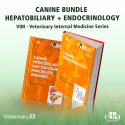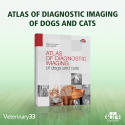Leukemia in dog and cat: correct diagnosis for correct managing of the patient
Leukemia is a heterogeneous group of lymphohematopoietic neoplastic diseases affecting cats and dogs with a relatively high frequency and generally showing non-specific clinical signs. A correct diagnosis of the different types of leukemia (Acute Lymphoid Leukemia, Acute Myeloid Leukemia, Chronic Lymphocytic Leukemia) and the identification of putative prognostic factors are based on the use of different laboratory tests including hematology, cytology, bone marrow biopsy, flow cytometry/immunohistochemistry. A comprehensive interpretation of the laboratory results is mandatory to differentiate leukemia from leukemic lymphoma and other similar hematological diseases, accurately identify the type of leukemia, and adequately predict prognosis and tailor therapy.







